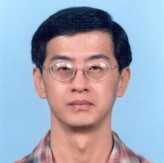

Taiwan Mountain Seismic Network (MTN)
With 80 km wide from east to west and 340 km long from south to north, the Taiwan mountain area covers an area of 2/3 of the entire Taiwan Island. This area has an average height of 2500 meters which is the region that very difficult to collect earthquake records. In order to obtain the free-field ground motions generated by earthquakes, the IES began to install a seismic network in the mountain area. This installation of seismic station began in 2006 with 16 seismic stations and increased to 80 stations in 2016. These stations were collected many near-source ground-motion data to study the seismic source characteristics for earthquakes occurred in the MTN. Data from MTN and TSMIP will be integrated to study the path effects from different seismogenic zones to the metropolitan area and provide significant information to reduce seismic hazard.
Seismic Network in Taipei Metropolitan Area (TMA)
In order to continuously monitor the seismic activities in the TMA, two kinds of array observations have conducted in the years 2005-2015. The first one is free-field array, which is widely deployed in the mountain area vicinity of TMA. The second one is borehole array, which is set up in the Taipei basin. The two arrays provide comprehensive data ranging in amplitude from seismic background noise levels to damage levels as a result of shaking. The data can be used to address a wide variety of scientific and engineering issues. Ground response with different excitation levels and with different surface geology will be investigated and to improve our understanding of the urban seismic hazard in the TMA.
TAIPEI 101 seismic building array
Based on the recent described that both rotational and translational ground motions play a significant role in seismology and earthquake engineering. The IES at Academia Sinica initiated a modest program to monitor both translational and rotational ground motions from seismic and wind-induced vibrations at TAIPEI 101 Tower. The seismic building array installed in the Taipei 101 Tower comprises in total four stations installed in the basement and on the floors 74 and 90. Each station is equipped with two sensors, including a modern rotational seismometer on floor 90. The goal of this program provides the new measurements to the engineering field to identify the vibration characteristics of super tall buildings.
Field work for the international corporation project in the South China Sea (SCS)
The IES and the Philippine Institute of Volcanology and Seismology Department of Science and Technology (PHIVOLCS-DOST) and Institute of Geophysics Vietnamese Academy of Science and Technology (IG-VAST) have cooperated to study the high seismicity of the surrounding area of South-East Asia. With the help from the PHIVOLCS and VAST, a seismic network around the SCS has been created. Seismic data from this network will be shared with other research institutions in Taiwan and abroad for further research. We expect this seismic array will servers as an example to encourage more international cooperation to the scientific topics in seismology between Taiwan and its neighbor.